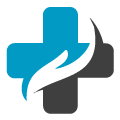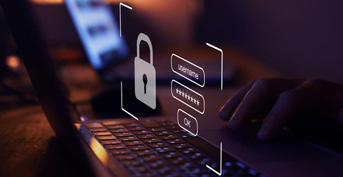Remote patient monitoring in Brooklyn, New York
Remote patient monitoring is a component of telehealth services that has had its popularity skyrocketed during the COVID-19 pandemic. In short, remote patient monitoring is a virtual healthcare system where the patient and the doctor are in separate places but are connected online and the patient’s data is collected through devices that transmit the data to the doctor for diagnosis. Our remote patient monitoring and telehealth service known as Akash Medical Care in Brooklyn, New York, is here at your service.
What is remote patient monitoring?
Remote patient monitoring (RPM) is the term dedicated to the use of technology in collecting the data on a patient’s health outside a hospital or any healthcare providing organization. Remote patient monitoring is a connected system of electronic tools that gather personal health and medical data such as blood pressure, vital signs, symptoms etc. of a person in one location and reviewed by a doctor or any provider in another location. The data may or may not be viewed immediately. Remote patient monitoring is an important part of telehealth solutions. Here in Akash Medical Care in Brooklyn, New York, we provide you the best remote patient monitoring in Brooklyn for your telehealth service.
The Basics of Remote Patient Monitoring
Before we jump into our services for you, let us take a look at the basics of our remote patient monitoring in Brooklyn. Remote patient monitoring (RPM) is evolving rapidly, spurred by the constraints of the COVID-19 pandemic. RPM cares for patients suffering from a myriad of conditions, such as diabetes, hypertension, and COVID-19.
Our RPM in Brooklyn can be used for both chronic and acute health conditions. It enables healthcare providers to observe patients in between clinic visits and also when in-person consultation is not possible. For people with chronic conditions such as asthma, diabetes, hypertension, heart condition, mental illness etc. a continuous care is needed and RPM serves accordingly. Recently, COVID-19 being a contagious disease, RPM has been a life-saver.
Remote patient monitoring involves the use of devices such as weight scales, blood glucose meters, pulse oximeters, blood pressure monitors, heart monitors, and even special monitors for diseases such as dementia and Parkinson’s. Wearable smartwatches are also part of RPM devices. RPM service also involves echocardiograms, X-rays, oxygen therapy and intravenous fluids, and skilled pharmacy and nursing service. The health data of patients are transmitted to doctors and other healthcare providers to diagnose and provide outcomes. Even though home hospital programs require in-person care, they are supported by continuous monitoring of biometrics by a team providing telehealth visits.
Components of remote patient monitoring
- Monitoring devices such as smart devices, wearable sensors, implantable devices, and other tools that collect patient data. Glucose meters, blood pressure monitors, pulse oximeters, activity trackers, ECG monitors etc. are some examples.
- Communication Technology such as the use of communication channels that transmit collected data safely. This includes smartphones, tablets, computers, pagers or other monitoring platforms.
- Data Aggregation Platforms are software systems that collect, store, and organize the data from monitoring tools. These platforms involve analytic tools to help doctors and healthcare providers to assess the data correctly.
- Healthcare Providers Interface is a dashboard that allows doctors to access and review patient’s data, enabling them to observe multiple patients remotely and decide when to intervene.
Difference between remote patient monitoring and remote therapeutic monitoring
Remote therapeutic monitoring (RTM) is the use of technology to observe non-physiological data remotely, involving musculoskeletal and respiratory systems. Also, RTM is used to monitor a person’s pain levels, their adherence and response to therapeutic intervention and medications. Patients can collect, record, and transmit and report it to healthcare providers or the data can be transmitted automatically. RTM must use a medical device that meets the criteria posed by the government. For RTM, the qualified healthcare provider should be a physical therapist, occupational therapist, respiratory therapist, physician or physician’s assistant. RTM codes are used as general management codes that therapists utilize to bill and offer their services.
Remote patient monitoring must not be confused with remote therapeutic monitoring. For RPM, heart rate, blood pressure, blood glucose levels etc medical data is automatically collected and unlike RTM, there is no scope for self-reporting. Secondly, RPM codes are known as Evaluation and Management (E/M) codes which cannot be billed for by medical providers.
Advantages of Remote Patient Monitoring
In Akash Medical Care, we provide the best remote patient monitoring in Brooklyn, New York. Below is a list of benefits of our remote patient monitoring.
- Constant monitoring
RPM allows doctors and other healthcare providers to constantly monitor a patient’s health status, enabling the early detection of their health conditions.
- Improved access to healthcare
People in villages and remote regions can access better quality healthcare without needing to go for in-person visits, saving their time.
- Engaging patients
People have become more aware of their health in general. They are getting involved in maintaining their health as they have access to real-time data about their condition.
- Reduced cost
RPM has minimized the total cost of healthcare as readmissions to hospitals are not necessary anymore unless it is a severe illness. Plus, there are less complications and optimized resource utilization. RPM has saved travel costs.
Applications of Remote Patient Monitoring
Remote patient monitoring in Brooklyn, New York with Akash Medical Care has several applications to serve you.
- Chronic Disease Management: RPM is especially effective in managing chronic diseases such as diabetes, heart diseases, hypertension, and respiratory disorders by tracking vital signs and symptoms.
- Post-Discharge Care: Observing patients even after they have been discharged from the hospital can help prevent further complications and reduce the rate of readmissions. This is possible due to our remote patient monitoring in Brooklyn with Akash Medical Care.
- Aging Population Care: Monitoring the health conditions or senior citizens is another field RPM assists in. This allows elderly people to live independently while ensuring timely intervention.
- Clinical Trials and Research: RPM is used to collect real-time data in clinical trials and research studies, ensuring more comprehensive and accurate info on a patient's health.
- Remote Infertility Treatment: RPM has made remote infertility treatment easier and it has saved travel cost of visiting clinics repeatedly.
Challenges and Considerations
- It is pivotal to maintain the security and privacy of a patient and their transmitted data through remote patient monitoring.
- Seamless integration with electronic health records and a proper healthcare workflow is mandatory for effective implementation.
- Maintaining regulatory requirements and standards, such as HIPAA (Health Insurance Portability and Accountability Act of 1996) in the United States is essential to ensure our legal compliance and protect the information about patients’ health. We in Akash Medical Care, Brooklyn, New York will be there for the safety of your patient information.



